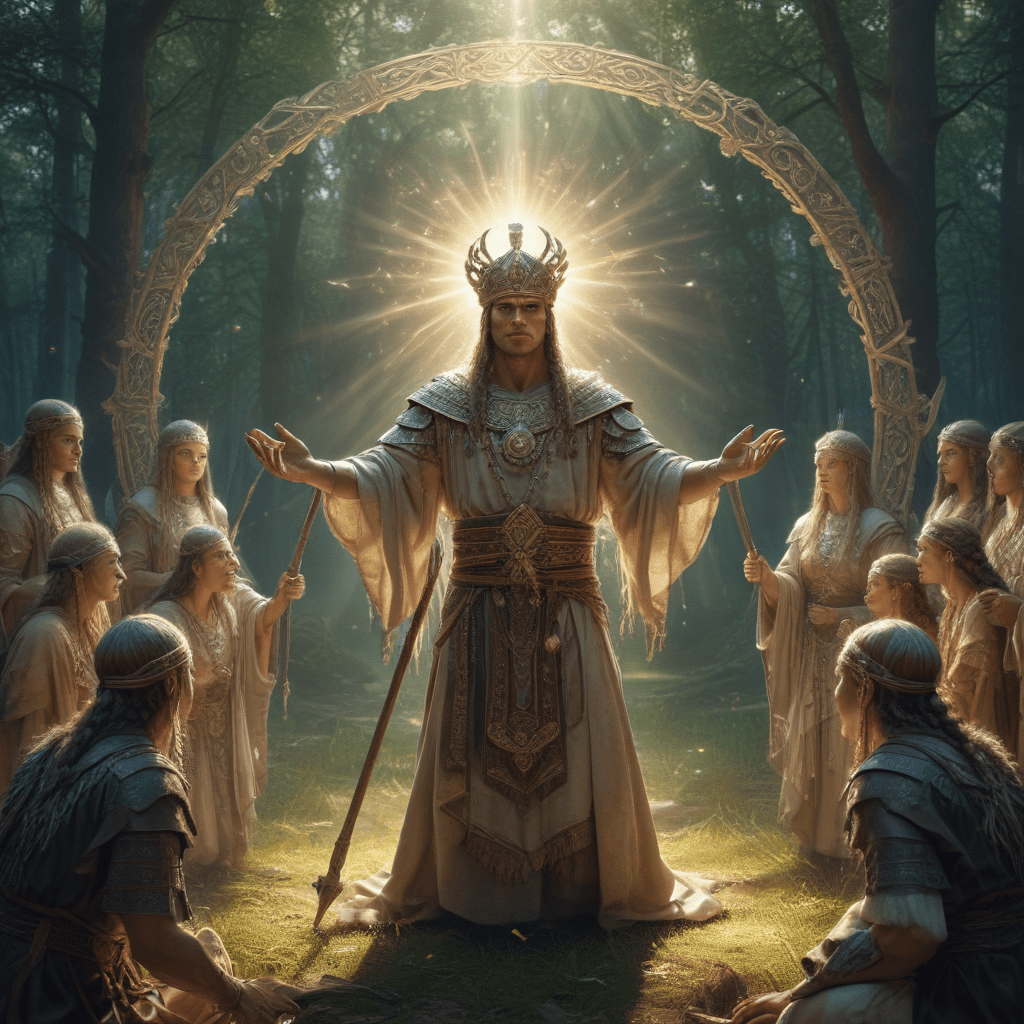The Trickster’s Role in Creation Myths: Chaos and Order
Introduction to Creation Myths
Creation myths serve as foundational narratives that explain the origins of the world, humanity, and the universe in various cultures. These stories are significant as they reflect the values, beliefs, and understanding of existence within a society. Each culture has its own unique creation tale, yet many share common themes, such as the struggle between chaos and order, the role of deities, and the explanation of natural phenomena.
Understanding the Trickster Archetype
The trickster archetype is a prominent figure in mythology, often embodying qualities of deception, cleverness, and unpredictability. This character is typically seen as a boundary-crosser, challenging societal norms and expectations. Tricksters are often portrayed as:
- Intelligent and cunning
- Playful and mischievous
- Ambiguous in moral standing
- Transformative figures who challenge the status quo
The Duality of Chaos and Order
Chaos and order are fundamental concepts in creation myths. Chaos represents a state of disorder and uncertainty, often depicted as a primordial void or tumultuous environment. In contrast, order signifies structure, harmony, and stability. The interplay between chaos and order is crucial in shaping the universe and often serves as a backdrop for the actions of trickster figures.
Trickster Figures Across Different Cultures
Throughout various cultures, notable trickster figures have emerged, each with unique attributes and stories. Some of these figures include:
- Loki – In Norse mythology, Loki is a complex character known for his cunning and ability to shape-shift. His actions often lead to chaos, but he also plays a vital role in the creation and destruction of the world.
- Coyote – In Native American traditions, Coyote is a trickster who embodies both wisdom and folly. His tales often highlight themes of adaptability and the consequences of actions.
- Anansi – In African folklore, Anansi the spider is a clever trickster known for his stories and ability to outsmart others. Anansi’s tales often convey moral lessons while illustrating the complexities of life.
These trickster figures illustrate a comparative analysis of their roles in creation narratives, highlighting how their actions often lead to both chaos and order in their respective mythologies.
The Trickster’s Role in Chaos Creation
Tricksters are instrumental in introducing chaos into the creation process. This chaos often disrupts existing order, leading to new beginnings and transformations. For instance:
- In the creation story of the Hawaiian goddess Pele, her fiery temper and chaotic nature bring forth the creation of the Hawaiian Islands.
- Loki‘s mischief often leads to catastrophic events in Norse myths, paving the way for renewal and rebirth.
These myths illustrate how trickster actions can disrupt the established order, allowing for the emergence of new possibilities and life forms.
Tricksters as Agents of Change
Tricksters possess a transformative power that facilitates creation through chaos. They challenge existing structures, forcing characters and societies to adapt and evolve. For example:
- In the tale of Coyote, his antics lead to the creation of various natural features and phenomena, highlighting the importance of change and adaptability.
- Anansi often outsmarts stronger beings, showcasing the idea that wit and intelligence can bring about significant change.
These case studies demonstrate how tricksters serve as catalysts for transformation, emphasizing the necessity of chaos in the creation process.
Establishing Order from Chaos
While tricksters introduce chaos, their actions frequently lead to the establishment of order. Myths illustrate how the resolution of chaos results in harmony and structure. For instance:
- The chaos brought by Loki eventually leads to the formation of new gods and the establishment of the cosmos.
- In many Native American stories, Coyote’s disruptions lead to the creation of the world as humans know it, establishing the order of nature.
These narratives highlight the cyclical nature of chaos and order, emphasizing that creation often arises from disruption.
Symbolism of the Trickster in Modern Contexts
The relevance of trickster figures has not diminished in contemporary storytelling and culture. Modern literature and media often feature tricksters who embody similar qualities:
- Characters like Jack Sparrow from “Pirates of the Caribbean” and Deadpool exemplify the trickster archetype through their cleverness and disregard for rules.
- In literature, trickster themes appear in works like “The Hitchhiker’s Guide to the Galaxy,” where absurdity and humor create chaos that leads to deeper insights.
This evolution of the trickster archetype reflects its enduring significance in exploring themes of chaos and order in human experience.
The Psychological Perspective on Tricksters
From a psychological standpoint, tricksters symbolize the inner conflicts humans face regarding chaos and order. They represent the tension between rationality and impulse, structure and spontaneity. The trickster can be seen as:
- A reflection of the subconscious mind, embodying desires and fears.
- An agent of self-discovery, encouraging individuals to confront their own complexities.
This psychological insight allows for a deeper understanding of how trickster figures resonate with the human experience, highlighting the necessity of chaos in personal growth and development.
Conclusion: The Enduring Legacy of the Trickster in Creation Myths
In summary, trickster figures play a crucial role in creation myths by navigating the delicate balance between chaos and order. Their actions often introduce disruption that ultimately leads to transformation and the establishment of new structures. The trickster’s legacy continues to influence modern storytelling and psychology, reflecting the enduring significance of this archetype in understanding the complexities of life. As we explore the depths of creation narratives, the trickster remains a vital figure, embodying the intricate dance between chaos and order that shapes our world.

